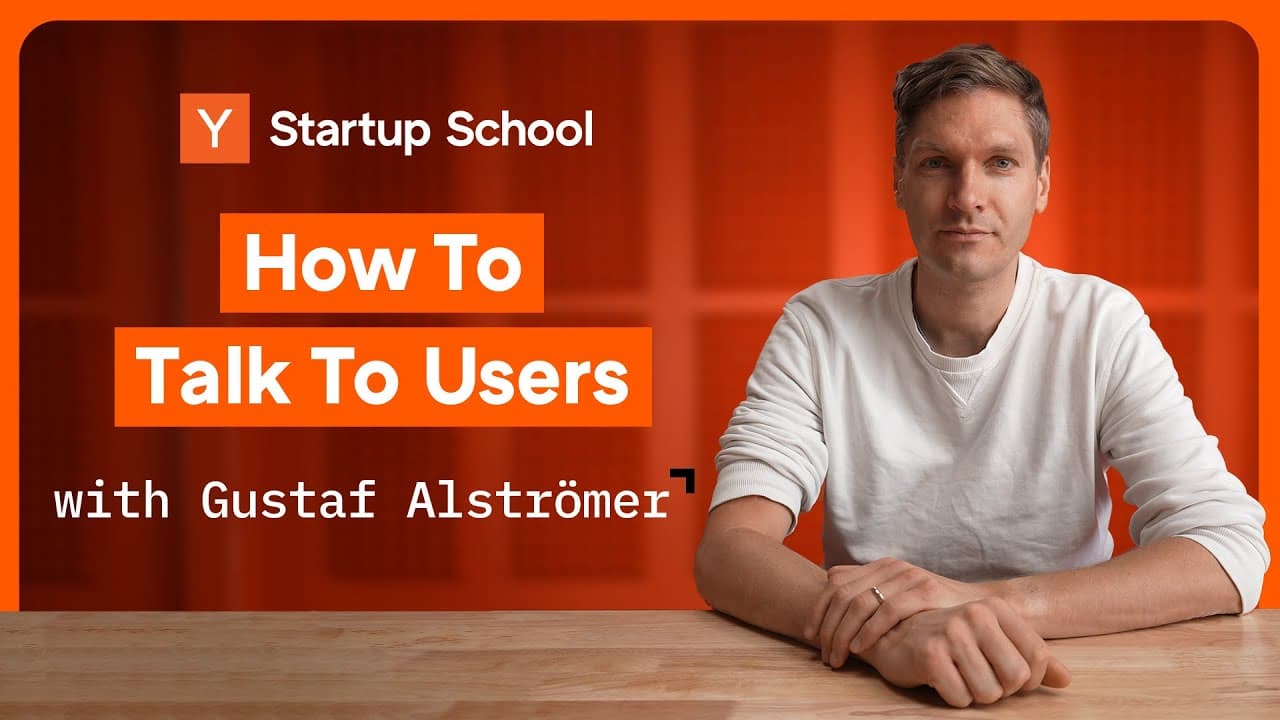How To Talk To Users | Startup School
29 Oct 2023 (2 years ago)

Introduction (0s)
- Gustav, the speaker in the video, is a group partner at Y Combinator. He was also a founder and a practitioner at Airbnb.
- The discussion focuses on how to talk to users and future customers for startups.
Outline (26s)
- The key points to be discussed include why great founders always communicate with their users, where and how to find users, what questions to ask to users, and how to convert the findings into an MVP (Minimum Viable Product).
Best Founders Learn from Their Users (42s)
- The best founders gain insights directly from their users, which helps them identify actual problems that their product can solve.
- An example mentioned is Airbnb's founders who established a deep connection with their hosts very early on, helping them understand host motivations and feedback.
- Users keep founders honest as they provide immediate and practical feedback, given that they are the ones financially invested in the product.
Who Should I Talk To? (3m23s)
- When looking for people to interview, don't hesitate to reach out to acquaintances or co-workers as they might be potential users.
- Founders can find early users via LinkedIn, red forums, slack communities, and sometimes in-person events.
- To understand the problem your product can solve, reach out to people who are most likely to face it and interview them.
How to Interview Potential Customers (5m58s)
- Interviews should ideally be over video calls, phone calls, or in person.
- Build rapport before starting the interview and avoid getting into details about your idea too early as it can bias the responses.
- Take note of their in-communication behavior along with their responses.
- Ask open-ended, specific questions such as 'What is the hardest thing about…', 'How often do you…', etc., to gain a deeper understanding of their problems and motivations.
Follow ups & Don't ask these questions (9m42s)
- The significance of follow-up questions in eliciting more detailed responses was highlighted.
- Interviews should focus on understanding the problem, not brainstorming solutions.
- Avoid asking potential users for opinions on features or design ideas since they are not the experts in these areas.
- Avoid yes/no questions as they don't provide in-depth insights.
- Avoid asking two questions at once as it can lead to confusion.
- Focus on problems, not features - users often provide good problems, but bad solutions.
- Avoid the tendency to agree to every potential feature suggested by users.
- After conducting interviews, organize notes, identify frequent issues, and form a hypothesis for the solution.
- Consider if the problem being solved is one users would pay to have resolved.
- Evaluate the potential success of a product by establishing if people are currently paying for similar solutions, if people are satisfied with current solutions, and how easy it is to access the target audience.
MVP prototype session interviews (14m37s)
- An MVP prototype should be shown to users for feedback, even if it's just a design prototype.
- Watch users interacting with the prototype and ask them to vocalize their thought process.
- After conducting interviews and prototype sessions, keep interviewees involved throughout the process.
- Create a community for users via Slack or WhatsApp groups, making them feel special about their access to and influence over the development of the product.
- Give these users exclusivity, showing them product advancements to build trust and keep their engagement.
- Involve these users in the feedback loop by showing them how their suggestions have been implemented.